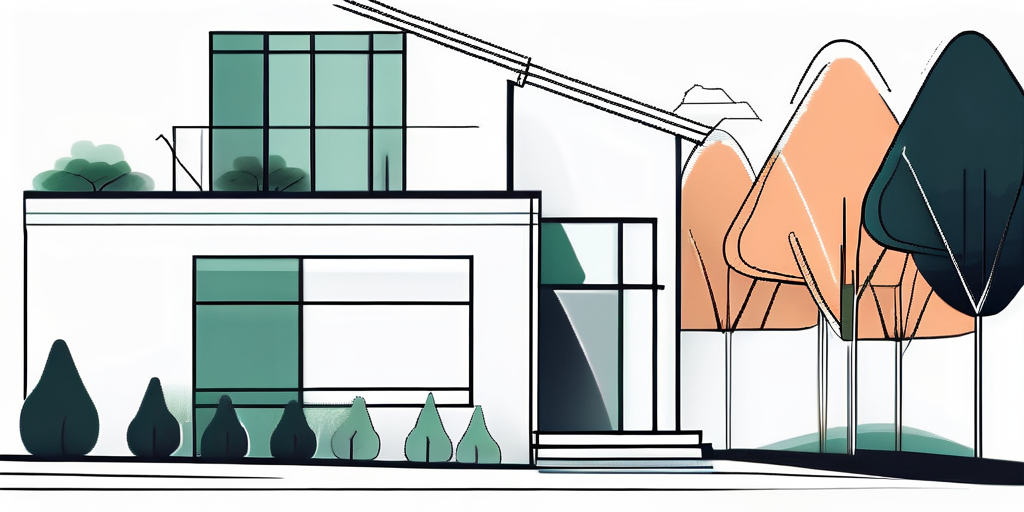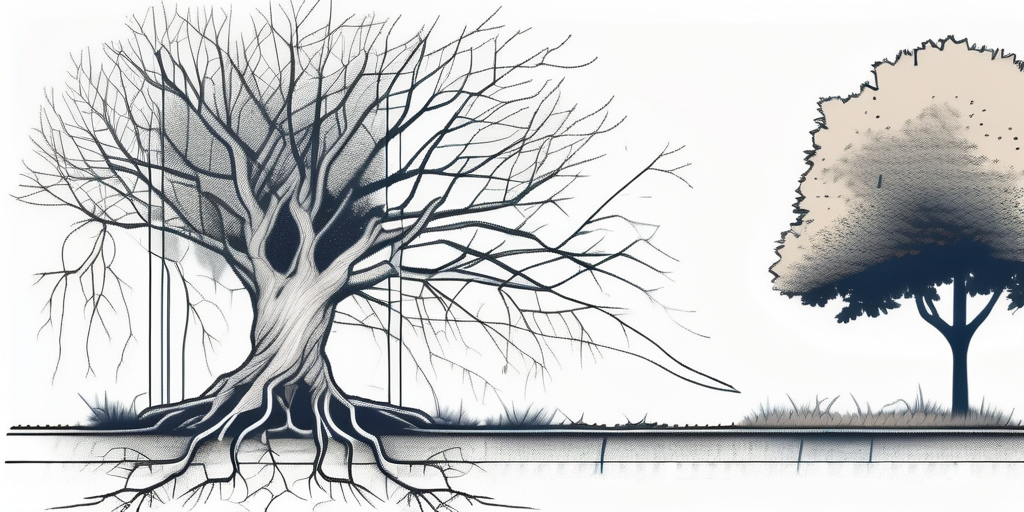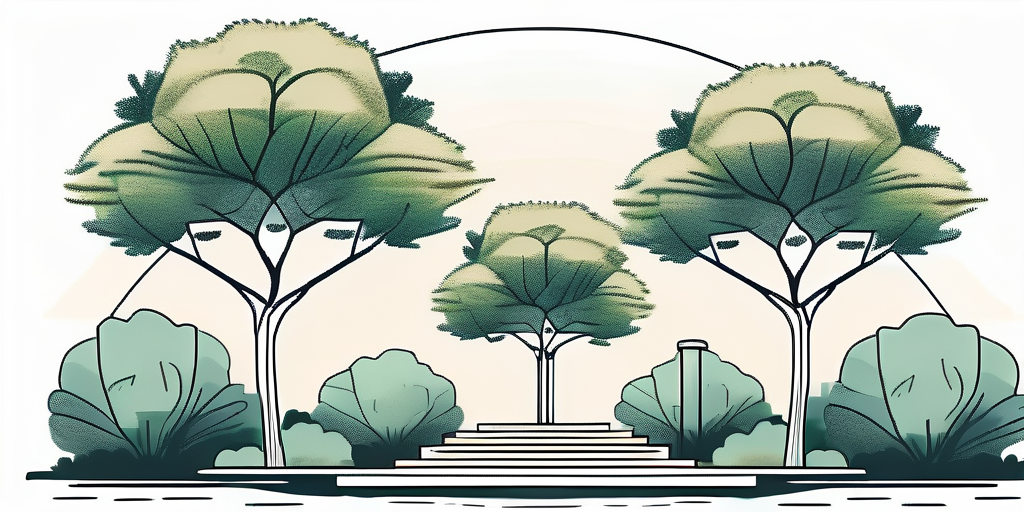Who is Responsible if My Tree Falls on My Neighbor's House?

Who is Responsible if My Tree Falls on My Neighbor's House?
If you have a tree on your property and it unexpectedly falls on your neighbor's house, it's important to understand the legal implications and responsibilities associated with such an incident. Trees are not just beautiful additions to our landscapes, but they can also become potential hazards if not properly maintained. In this article, we will explore the various factors that determine liability, the role of insurance policies, the legal aspects of tree damage, and preventive measures to avoid tree-related disputes.
Understanding Tree Ownership and Responsibility
Before delving into the specific responsibilities regarding tree damage, it's essential to establish the concept of tree ownership. In general, when a tree is situated on your property, you are deemed the owner and are therefore responsible for its maintenance and any damages it may cause. However, there are exceptions to this rule, and it's crucial to consider local laws and regulations.

Defining Tree Ownership
Tree ownership is generally determined by the location of the tree's trunk. If the trunk is entirely on your property, you are considered the sole owner. However, if the trunk is situated on the boundary line between your property and your neighbor's, both you and your neighbor may share ownership and responsibility for the tree.
Responsibility for Tree Maintenance
As a tree owner, it is your responsibility to ensure regular maintenance and inspections to mitigate potential hazards. Regular maintenance includes tasks such as pruning dead branches, removing diseased trees, and ensuring proper root care. Neglecting tree maintenance could potentially increase your liability if it causes damage to your neighbor's property.
When it comes to tree maintenance, it's important to understand that different species of trees have varying needs. For example, deciduous trees shed their leaves in the fall, requiring regular raking and disposal. Evergreen trees, on the other hand, retain their foliage year-round, necessitating periodic needle clean-up and proper mulching to promote healthy growth.
In addition to regular maintenance, it's also crucial to consider the environmental impact of trees on your property. Trees provide numerous benefits, such as improving air quality, reducing noise pollution, and providing shade. However, they can also pose risks during severe weather conditions. Understanding the potential risks and taking appropriate measures, such as trimming overhanging branches and securing weak limbs, can help minimize the chances of property damage or personal injury.
Factors Determining Liability in Tree-Related Incidents
Liability in tree-related incidents is contingent upon various factors, including negligence, natural disasters, and the presence of insurance policies to cover damages.

The Role of Negligence in Liability
In some cases, liability for tree damage may be determined by proving negligence. If you were aware of a hazard posed by your tree, such as a visibly rotten trunk or significant leaning, and failed to take action to rectify the issue, you may be held responsible for any resulting damages. It is critical to promptly address any potential risks associated with trees on your property.
Impact of Natural Disasters on Liability
When it comes to liability for tree-related damage caused by a natural disaster, such as a severe storm or earthquake, the responsibility may shift. In many cases, insurance policies will cover damages resulting from unavoidable events. However, it is important to review your specific policy to determine the extent of coverage and be aware of any exclusions related to acts of nature.
Furthermore, it is worth noting that the impact of natural disasters on liability can vary depending on the jurisdiction. Some regions have specific laws in place that outline the responsibilities of property owners in the event of tree-related incidents caused by natural disasters. These laws may take into account factors such as the severity of the event, the foreseeability of the damage, and the steps taken by the property owner to mitigate potential risks.
In addition to negligence and natural disasters, the presence of insurance policies can play a significant role in determining liability. Having an appropriate insurance policy that covers tree-related incidents can provide a layer of protection for property owners. However, it is important to carefully review the terms and conditions of the policy to understand the extent of coverage and any limitations or exclusions that may apply.
Moreover, it is advisable to regularly inspect and maintain trees on your property to minimize the risk of incidents and potential liability. Engaging the services of a certified arborist can help identify any potential hazards and provide guidance on appropriate actions to mitigate risks. Taking proactive measures can not only protect your property but also contribute to the overall safety of your surroundings.
Insurance Policies and Tree Damage
Understanding the coverage provided by insurance policies is vital in determining liability for tree damage. Both your homeowner's insurance and your neighbor's insurance may play a role in covering the cost of repairs.
Homeowner's Insurance Coverage for Tree Damage
Your homeowner's insurance policy may cover damages caused by your fallen tree, depending on the circumstances. It is recommended to review your policy to determine the specific terms, conditions, and coverage limits. If your tree falls on your neighbor's house, their homeowner's insurance may also cover their property damage.
Understanding Your Neighbor's Insurance Policy
To be fully informed about the potential financial consequences of a tree-related incident, it is essential to understand your neighbor's insurance policy. They may have coverage for damages caused by your tree, and it is advisable to discuss the situation with them and their insurance provider to ensure a clear understanding of their coverage and any associated deductibles.
When it comes to tree damage, it's important to consider the various factors that can affect insurance coverage. For example, if the tree was healthy and well-maintained before it fell, it may be easier to make a case for coverage. On the other hand, if the tree was diseased or in poor condition, insurance companies may argue that it was the result of negligence and deny the claim.
Additionally, the location of the tree can also impact coverage. If the tree was located on your property, it is more likely that your homeowner's insurance will be responsible for the damages. However, if the tree was situated on public property or within an easement, liability may shift to the appropriate municipality or utility company.
It's worth noting that insurance policies can vary significantly, so it's crucial to carefully review the terms and conditions of your own policy and your neighbor's policy. Some policies may have specific exclusions for certain types of tree damage, such as damage caused by windstorms or acts of God. Others may require you to pay a deductible before coverage kicks in.
In conclusion, understanding the intricacies of insurance coverage for tree damage is essential for protecting yourself and your neighbor in the event of an unfortunate incident. By reviewing your policies, communicating with your neighbor, and seeking clarification from your insurance providers, you can ensure that you are well-prepared and informed in case of any tree-related mishaps.
Legal Aspects of Tree Damage to Neighbor's Property
In some cases, tree damage can result in legal consequences, and it is important to be aware of the potential ramifications.
When it comes to tree damage, understanding the potential legal consequences is crucial. If your tree causes significant damage to your neighbor's property, they may choose to pursue legal action against you. The legal consequences can vary depending on the severity of the damage, local laws, and the degree of negligence involved. It is advisable to consult with a legal professional familiar with your jurisdiction's specific regulations regarding tree-related disputes.
One potential legal consequence of tree damage is the requirement to compensate your neighbor for the cost of repairs. This can include not only the cost of fixing the damage but also any loss of use or enjoyment of their property during the repair process. The amount of compensation will depend on various factors, such as the extent of the damage and the market value of the property.
Potential Legal Consequences of Tree Damage
If the damage caused by your tree is severe and your neighbor can prove that you were negligent in maintaining it, you may also be held liable for additional damages. This can include emotional distress, loss of property value, and even punitive damages in some cases. It is essential to understand that negligence can be subjective and may depend on factors such as regular tree maintenance, inspection, and prompt action in case of potential risks.
Furthermore, it is worth noting that some jurisdictions have specific laws regarding the responsibility of tree owners. In these cases, if you were aware of a hazardous tree on your property and failed to take appropriate action to prevent damage, you may face more severe legal consequences.
Dispute Resolution and Mediation Options
Should a tree-related dispute arise between you and your neighbor, exploring alternatives to litigation can be beneficial for both parties involved. Mediation, for example, allows for open communication, facilitated negotiations, and the potential for a mutually agreeable resolution. Engaging in dispute resolution can help maintain neighborly relationships and save both time and money.
During mediation, a neutral third party, such as a trained mediator, can assist in facilitating discussions between you and your neighbor. They can help identify common interests, clarify misunderstandings, and explore potential solutions that meet the needs of both parties. Mediation can be a less adversarial and more collaborative approach to resolving tree-related disputes, allowing for a more satisfactory outcome for all involved.
It is important to note that mediation is not binding, meaning that both parties must voluntarily agree to any proposed resolutions. However, the process can provide a valuable opportunity for open dialogue and finding common ground, which can often lead to a more amicable resolution than a court battle.
Preventive Measures to Avoid Tree-Related Disputes
While it's impossible to predict every tree-related incident, taking preventive measures can significantly reduce the likelihood of disputes arising with your neighbors.

Regular Tree Maintenance and Inspection
Schedule regular inspections by a certified arborist to assess the health of your trees and identify potential risks. Pruning dead or weak branches, monitoring structural integrity, and addressing any concerns promptly can help prevent tree-related accidents and minimize damages to your neighbor's property.
Communicating with Neighbors About Tree Concerns
Open communication is key to maintaining positive relationships with your neighbors. If you have any concerns or receive feedback regarding the condition of your trees, address them promptly. By actively involving your neighbors in discussions about tree maintenance and potential risks, you can work together to ensure a safe and harmonious living environment.
Ultimately, the responsibility for a tree falling on your neighbor's house depends on various factors, including tree ownership, negligence, insurance policies, and legal considerations. Being proactive in maintaining your trees and understanding the relevant regulations can help prevent tree-related disputes and preserve positive relationships with your neighbors.
Who is Responsible if My Tree Falls on My Neighbor's House?
Question: Who is responsible if my tree falls on my neighbor's house?
Answer: Responsibility depends on factors like tree ownership, negligence, insurance coverage, and local laws.
- If the tree was healthy and well-maintained, you may not be liable.
- If you neglected a hazardous tree, you could be held responsible for damages.
- Both homeowner's insurance policies may be involved depending on circumstances.
- Consider mediation for resolving disputes amicably.
- Regular tree maintenance and communication with neighbors can help prevent issues.
Tree falls on neighbor's house: Key factors for liability:
- Tree ownership: Your responsibility if tree trunk is on your property.
- Negligence: Liable if you knew of a hazard and failed to act.
- Natural disasters: May shift responsibility depending on insurance coverage.
- Insurance: Homeowner policies likely cover damages within limits.
- Legal consequences: Potential for compensation and other damages if negligent.
- Dispute resolution: Mediation can offer an amicable solution.
- Prevention: Regular maintenance and communication reduce disputes.
Remember: Consult legal counsel for specific situations and review insurance policies carefully.
Additional Resources:
- City of Fayetteville: https://www.fayetteville-ga.gov/
- Georgia Emergency Management Agency: https://gema.georgia.gov/
- National Arbor Day Foundation: https://www.arborday.org/
- Emergency Tree Removal: Available 24/7
- Professional Tree Maintenance & Inspections: Serving Fayetteville and surrounding areas
- Free Estimates: Contact us today for a quote!
Emergency Services:
- Fayetteville Police Department: 770-461-4441 (Non-Emergency: 770-461-4548)
- Fayette County Fire Department: 911 or 770-305-5414 (Non-Emergency)
- Fayette County Medical Examiner: 770-460-8400
- Grady Memorial Hospital: (678) 419-2000
Utilities:
- Georgia Power: 1-800-654-9257
- Fayette County Water & Sewer: 770-461-8350
- Atlanta Gas Light: 1-800-289-4271
Legal Resources:
- Georgia Bar Association: 404-527-8734
- Fayette County Courthouse: 770-461-6600
- National Legal Aid & Defender Association: 202-347-8510
Mental Health Resources:
- Georgia Crisis & Access Line: 1-800-789-2437
- National Suicide Prevention Lifeline: 988
- Crisis Text Line: Text HOME to 741741
Local Government:
- City of Fayetteville: 770-461-6000
- Fayette County: 770-461-4000
Other Resources:
- American Red Cross: 1-800-RED-CROSS
- Federal Emergency Management Agency (FEMA): 1-800-621-FEMA
- National Arbor Day Foundation: 1-800-422-4514
Remember: This list is not exhaustive, and it's crucial to seek professional help for specific needs. Always dial 911 for life-threatening emergencies.

